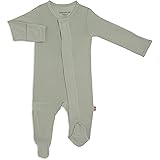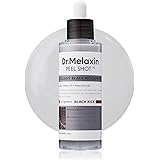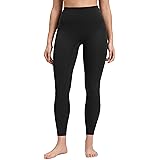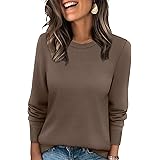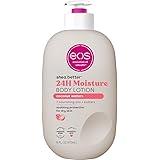The numbers are stark: the average family discards a staggering 30 kilograms of clothing each year. Only about 15% of these items find a second life through donation or recycling. The vast majority, a weighty 85%, ends up in overflowing landfills. This grim reality highlights a critical issue in our modern consumption habits, particularly within the fashion industry. As the video above explains, the path forward involves embracing sustainable fashion.
Sustainable fashion represents a powerful movement. It is a process where clothing and accessories are made thoughtfully. This approach prioritizes environmental health. It also ensures social justice across the entire supply chain. Understanding this concept is crucial. It empowers us to make more informed choices. Let’s delve deeper into what sustainable fashion truly means.
1. Unpacking the Environmental Toll of Fast Fashion
The fashion industry’s footprint is immense. It stands as one of the world’s largest polluters. This impact grows alarmingly with each passing day. Fast fashion, driven by trends and low prices, fuels this environmental disaster. It demands rapid production and frequent consumption. This cycle creates significant damage.
1.1. Greenhouse Gas Emissions: The Fashion Footprint
Every stage of clothing production releases greenhouse gases. Growing raw materials, manufacturing fabrics, and transporting goods all contribute. Traditional production methods are energy-intensive. They rely heavily on fossil fuels. This increases our planet’s carbon footprint. It intensifies climate change impacts.
Factories often run on non-renewable energy sources. Dyeing and finishing processes use large amounts of heat. Global shipping also adds to emissions. A simple t-shirt can travel thousands of miles. Each mile means more carbon. Reducing these emissions is vital. It’s a cornerstone of sustainable fashion practices.
1.2. Deforestation: Forests for Fabric
Certain popular fabrics contribute to deforestation. Rayon, viscose, and modal are made from wood pulp. If not sourced responsibly, this leads to forest destruction. Ancient and endangered forests are particularly vulnerable. This impacts biodiversity significantly. It also reduces our planet’s carbon absorption capacity.
Responsible sourcing uses certified forests. These forests ensure sustainable management. They protect delicate ecosystems. Choosing natural alternatives is another option. Hemp and organic cotton avoid this issue. This protects our vital forest resources.
1.3. Water Pollution: A Toxic Tide
The fashion industry is a major water polluter. Dyeing processes release vast amounts of toxic wastewater. These chemicals include heavy metals and azo dyes. They contaminate rivers and lakes. This harms aquatic life. It also poses risks to human health.
Microplastic pollution is another concern. Synthetic fabrics like polyester shed tiny plastic fibers. These microfibers enter waterways with every wash. They end up in our oceans. Marine animals ingest them. These plastics enter our food chain. Sustainable fashion seeks to minimize this contamination. It promotes cleaner production methods and eco-friendly dyes.
1.4. Soil Degradation and High Water Usage: Draining the Earth
Conventional cotton farming is incredibly resource-intensive. It demands massive amounts of water. It also relies heavily on pesticides and fertilizers. These chemicals deplete soil nutrients over time. They contaminate surrounding ecosystems. Soil health is crucial for food security.
A single cotton t-shirt can require thousands of liters of water. Denim jeans can use even more. This strains local water supplies. Many garment-producing regions already face water scarcity. Organic cotton farming offers a better way. It uses less water and no harmful chemicals. It helps maintain soil vitality.
1.5. Waste Accumulation: Mountains of Discarded Clothes
The video highlighted the massive amount of clothing waste. As a society, we discard clothes at an alarming rate. Trends shift quickly. Items are often poor quality. They are designed not to last. This creates an endless cycle of consumption and waste.
Landfills are overflowing with textiles. These materials can take hundreds of years to decompose. Synthetic fabrics never fully break down. They release harmful microplastics. Even natural fibers release methane in anaerobic landfill conditions. The concept of a circular economy is key here. It redesigns products for durability. It encourages repair, reuse, and recycling. This minimizes textile waste dramatically.
2. The Social Justice Core of Sustainable Fashion
Ethical business practices form the bedrock of sustainable fashion. It’s not just about environmental impact. It also deeply concerns human dignity and rights. The people who make our clothes often face harsh conditions. Addressing these issues is fundamental. It means ensuring fairness at every level.
2.1. Fair Wages for Garment Workers: Earning a Living
Many garment workers earn poverty wages. These wages barely cover basic living costs. They often work long hours in dangerous conditions. Brands frequently outsource production to countries with lax labor laws. This allows them to cut costs. Workers suffer greatly as a result.
Sustainable fashion advocates for living wages. A living wage allows workers to afford food, housing, healthcare, and education. It’s more than just a minimum wage. It’s about dignity and economic security. Fair compensation empowers communities. It improves quality of life for families.
2.2. Safe Working Environments: Protecting Our Makers
Factory conditions in the fast fashion industry can be appalling. Workers often face unsafe buildings and lack proper ventilation. Exposure to toxic chemicals is common. There’s a constant threat of fires or structural collapses. The Rana Plaza tragedy in Bangladesh exposed these horrific realities.
Ethical brands prioritize worker safety. They ensure proper ventilation and lighting. They provide protective equipment. Regular safety inspections are vital. These companies invest in healthy workplaces. They treat their employees with respect. A safe workplace is a basic human right. This is non-negotiable for sustainable fashion.
2.3. Fair Trade of Materials and Fabrics: Equity at the Source
Fair trade ensures equitable partnerships. It applies to raw material producers. Farmers who grow cotton or harvest natural fibers benefit. They receive fair prices for their goods. This helps them invest in their farms. It improves their living standards.
Fair trade also often includes environmental standards. It supports sustainable farming practices. It prevents child labor and forced labor. Certifications like Fair Trade Cotton guarantee these principles. Choosing fair trade items supports a more just global economy. It’s like planting a seed of fairness at the very beginning of the supply chain.
2.4. Brand Transparency: Lifting the Veil
Transparency is a critical component. It means brands are open about their supply chains. They disclose where their clothes are made. They share information about factories and suppliers. This accountability helps consumers make informed decisions. It allows advocacy groups to monitor conditions.
Many fast fashion brands operate in secrecy. They hide their production methods and partners. This makes it difficult to verify ethical practices. Sustainable fashion brands, conversely, embrace openness. They want consumers to know their story. They publish supplier lists. They share audit reports. This builds trust with consumers. It also pushes the entire industry towards better standards.
3. Becoming an Ethical and Informed Consumer
Your fashion choices hold significant power. Every purchase is like casting a vote. You can vote for harmful practices. Or you can vote for a better future. Becoming a conscious consumer is empowering. It drives positive change in the industry.
3.1. Buy Less, Choose Well: The Mindful Wardrobe
The simplest step is to reduce consumption. Do you truly need that new item? Consider its longevity and versatility. Invest in timeless pieces. Choose high-quality garments. These items last longer. They reduce overall waste. This approach saves money in the long run. It also lessens your environmental impact.
Think of your wardrobe as a carefully curated collection. Each piece should have a purpose. It should bring you joy. This contrasts sharply with fast fashion’s disposability. It’s a shift from quantity to quality. It truly embodies the spirit of sustainable fashion.
3.2. Explore Second-Hand and Vintage: Fashion’s Second Life
Pre-loved clothing is a fantastic sustainable option. Thrift stores, consignment shops, and online marketplaces offer treasures. Buying second-hand extends a garment’s life. It prevents it from ending up in a landfill. It significantly reduces demand for new production. This lessens resource extraction and pollution.
Vintage fashion offers unique styles. It allows for personal expression. It avoids the environmental cost of new manufacturing. This is like recycling in its most fashionable form. It’s a smart, stylish way to support sustainable fashion principles.
3.3. Repair and Repurpose: Extending Garment Lifespan
Don’t discard items at the first sign of damage. Learn basic mending skills. A small tear can be easily fixed. A missing button is simple to replace. Many local tailors offer repair services. This extends your clothing’s lifespan dramatically. It reduces waste significantly.
Repurposing old clothes is also creative. Turn old jeans into shorts. Transform a worn shirt into a cleaning rag. Even fabric scraps can become quilts or accessories. This mindset embraces resourcefulness. It directly combats the throwaway culture of fast fashion. It reinforces the value of your garments.
3.4. Support Certified and Ethical Brands: Voting with Your Wallet
Seek out brands committed to sustainability. Look for certifications like GOTS (Global Organic Textile Standard). GOTS ensures organic status of textiles. It covers environmental and social criteria. Fair Trade certification guarantees fair wages and conditions. bluesign® ensures safe chemical use.
These certifications provide assurance. They confirm that brands meet specific standards. Supporting such brands sends a clear message. It encourages more companies to adopt ethical practices. Researching brands is crucial. Tools like the Good On You app can help. They rate brands on their sustainability efforts. This guides your purchasing power effectively.
3.5. Ask Questions and Stay Informed: Your Role as an Advocate
Don’t hesitate to ask brands about their practices. Where do they source their materials? Who makes their clothes? What are their labor policies? Your questions push for greater transparency. They signal consumer demand for ethical production.
Stay informed about fashion industry news. Follow organizations promoting sustainability. Read articles and watch documentaries. Knowledge is power. It allows you to advocate for change. Your awareness can influence friends and family. It helps build a movement. Small changes do add up. They form big impacts, creating a brighter future for sustainable fashion.



